FM Basics
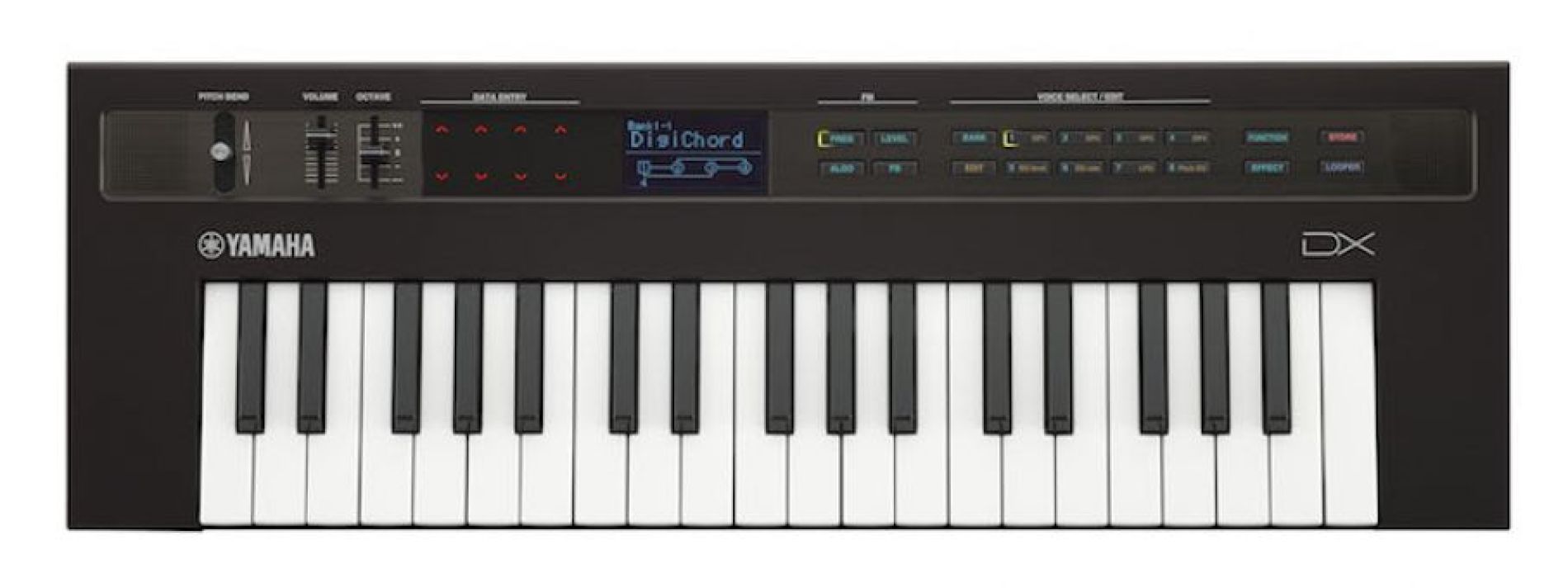
Tagged Under
Inspired by the classic DX7 style FM synthesis, the reface DX offers some different wrinkles. Stereo, dual Insertion Effect processing, capacitive touch data entry, and more. The original DX FM required, at minimum, a short stack (2 Operators) to generate a complex waveform. In reface DX each Operator can be made to generate a complex waveform. There are four Operators, each is initially a sine wave generator, but each can be fedback on itself to create more complex waveforms from a single Operator.
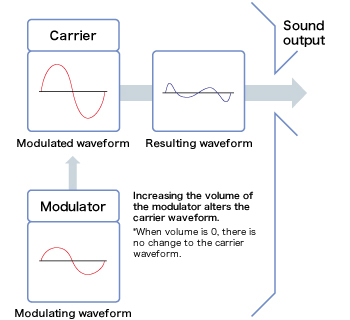 Frequency Modulation is basically using the output level of one waveform to modulate or change the output of another. This is accomplished by feeding the output of one oscillator into another. The Modulator is not heard directly, but you do hear its influence on the result from the other oscillator which is called the Carrier. FM, yes like the radio signal FM… Those radio signals are transmitted at frequencies far above what we can hear, DX-style FM takes place with frequencies well within our range of hearing. But it is the same FM.
Frequency Modulation is basically using the output level of one waveform to modulate or change the output of another. This is accomplished by feeding the output of one oscillator into another. The Modulator is not heard directly, but you do hear its influence on the result from the other oscillator which is called the Carrier. FM, yes like the radio signal FM… Those radio signals are transmitted at frequencies far above what we can hear, DX-style FM takes place with frequencies well within our range of hearing. But it is the same FM.
As musicians, we can better understand this Modulator:Carrier relationship by thinking musically. Imagine a violinist bowing a single string with their right (bow) hand and adding vibrato (pitch modulation) with their left hand. The bow puts the string in motion at a pitch of A440 (it carries the audio signal), while the left hand modulates the pitch by shortening and lengthening the vibrating string several times a second. The bowed string is the Carrier, the vibrato is the Modulator.
The frequency of the vibrato might be 4 cycles per second. Below our audible perception as a steady pitch… But you do hear the influence of this variation on the resulting sound. Dr. John Chowning, the Father of FM, discovered as you sped up the vibrato (modulator) you could effect a profound timbre change in the oscillator acting as the Carrier. Doing this electronically, he was able to speed the vibrato up to any frequency. As the Modulator frequency crossed into the audible frequency range, this caused a change in the overall tone of the resulting sound. And as the output level (called “modulator index”) increased so did the harmonic complexity of the results. Sidebands that included harmonic and even non-linear harmonic levels were generated and the complexity of timbre opened the door to a virtually unlimited range of tonalities.
Why this is musically important is sounds are made up of complex harmonic relationship, FM is a synthesis method that lends itself well to recreating both musical and non-musical timbres in an extremely wide variety of categories. Sound design with this FM engine can be mastered via this hands-on interface.
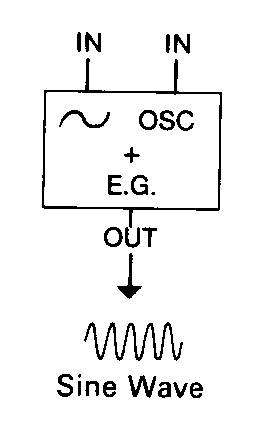 The Operator (oscillator) includes the sine wave generator, an Amplifier, an Amplitude Envelope Generator, and inputs from other Operators and the keyboard. This is different from the typical analog Oscillator – because it includes the EG as apart of this single block – each tone source has its own Amplitude Envelope. In your typical analog synth, the Oscillators share the same AEG.
The Operator (oscillator) includes the sine wave generator, an Amplifier, an Amplitude Envelope Generator, and inputs from other Operators and the keyboard. This is different from the typical analog Oscillator – because it includes the EG as apart of this single block – each tone source has its own Amplitude Envelope. In your typical analog synth, the Oscillators share the same AEG.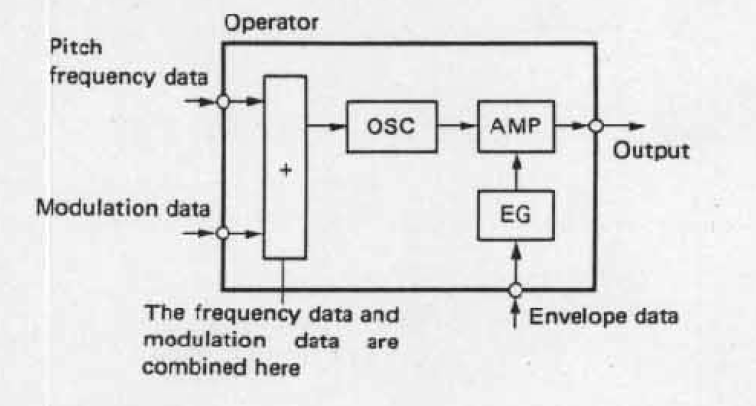 The Amplitude Envelope Generator is responsible for changes in output level of this Operator over time. You can control how it comes in, what it does while it is in, and how it disappears when you let go of the key. In the analog world this was referred to as ADSR or Attack-Decay-Sustain-Release – four parameters that defined the “shape” of Loudness in the case of the AEG. On the reface DX, you have 8 parameters to define this shape. The parameters are four LEVELs and four RATEs.
The Amplitude Envelope Generator is responsible for changes in output level of this Operator over time. You can control how it comes in, what it does while it is in, and how it disappears when you let go of the key. In the analog world this was referred to as ADSR or Attack-Decay-Sustain-Release – four parameters that defined the “shape” of Loudness in the case of the AEG. On the reface DX, you have 8 parameters to define this shape. The parameters are four LEVELs and four RATEs.
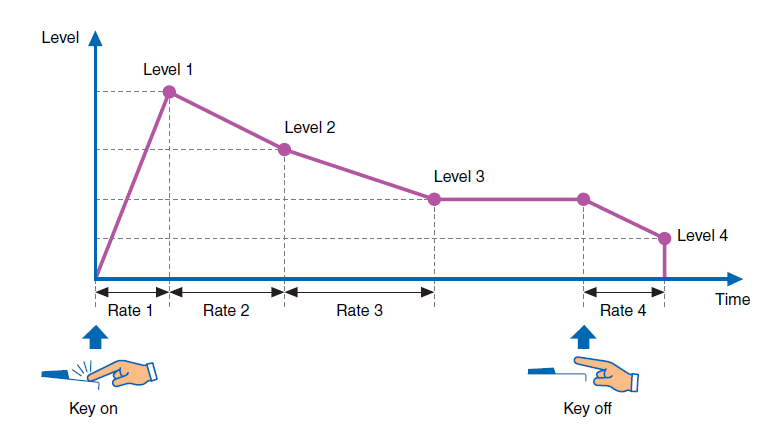
Basically you control how fast (Rate) the envelope travels from one Level to the next. In future articles we will show you how to take command of these Rates and Levels to create the results you require. Rates have values between 0 and 127, where the higher the number the faster the travel… think of the rates as miles per hour… higher is faster. This is not a strict TIME parameter, because if the distance it has to travel is longer the same value for RATE may not result in the same amount of elapsed time. So Rates and Levels work in combination. A Rate of 100 does not denote a specific value of time, if the distance it needs to travel is greater, it simply will take longer to travel that distance. Think real world again: Even if you are moving at 100mph, if you have to travel a greater distance it does take more time.
Follow the Synth Basics articles, here on YamahaSynth.com for tips and tricks on programming your reface DX. If you have questions or comments on this article, please go to this forum thread to disucss.
Keep Reading
© 2025 Yamaha Corporation of America and Yamaha Corporation. All rights reserved. Terms of Use | Privacy Policy | Contact Us